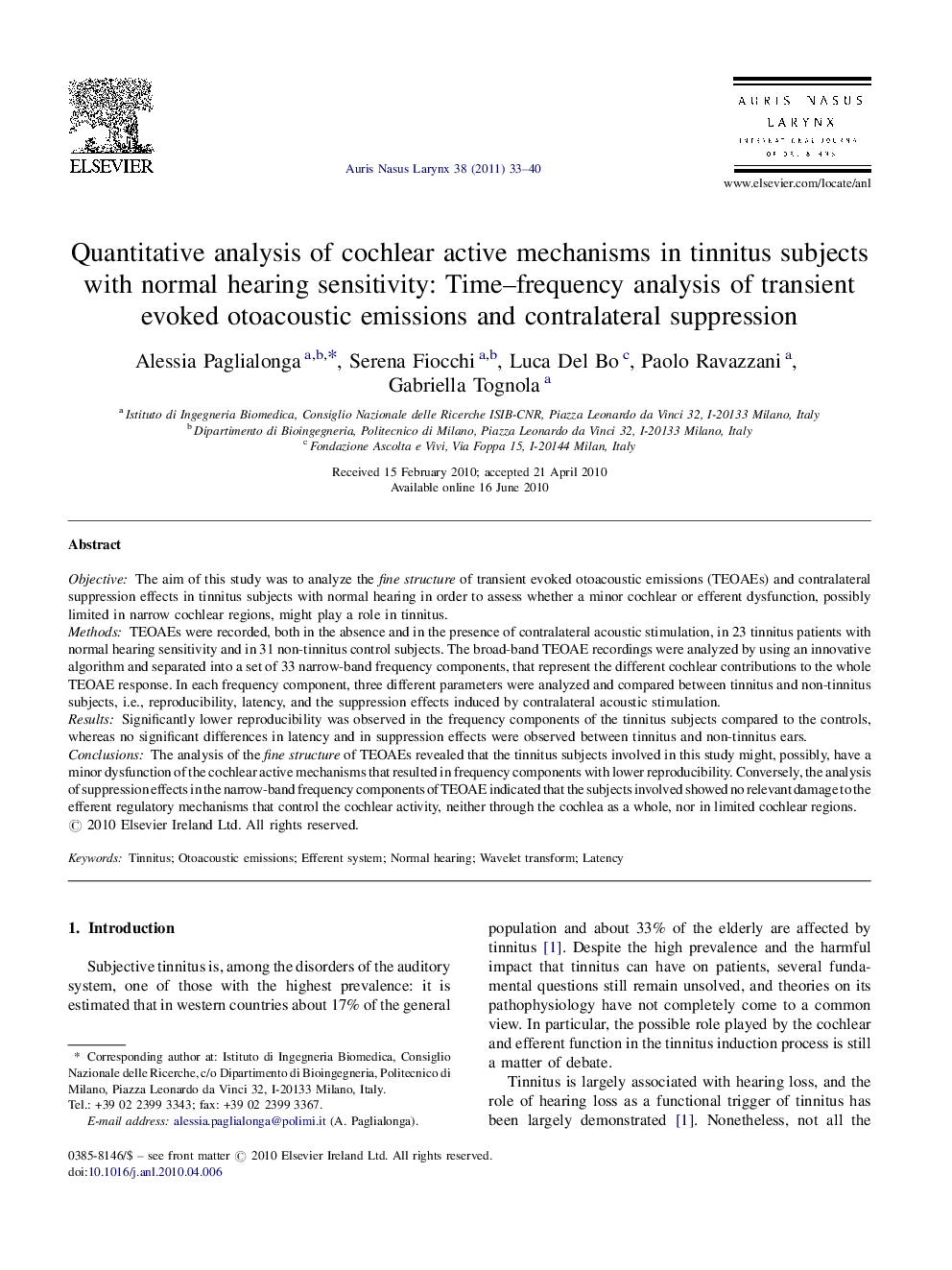| Article ID | Journal | Published Year | Pages | File Type |
|---|---|---|---|---|
| 8755970 | Auris Nasus Larynx | 2011 | 8 Pages |
Abstract
The analysis of the fine structure of TEOAEs revealed that the tinnitus subjects involved in this study might, possibly, have a minor dysfunction of the cochlear active mechanisms that resulted in frequency components with lower reproducibility. Conversely, the analysis of suppression effects in the narrow-band frequency components of TEOAE indicated that the subjects involved showed no relevant damage to the efferent regulatory mechanisms that control the cochlear activity, neither through the cochlea as a whole, nor in limited cochlear regions.
Related Topics
Health Sciences
Medicine and Dentistry
Medicine and Dentistry (General)
Authors
Alessia Paglialonga, Serena Fiocchi, Luca Del Bo, Paolo Ravazzani, Gabriella Tognola,
